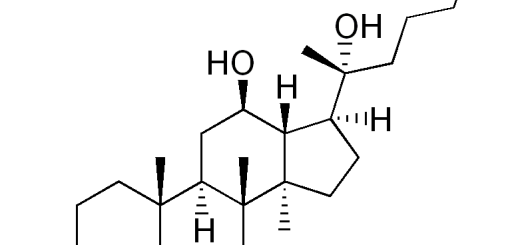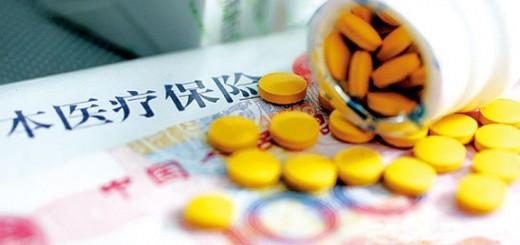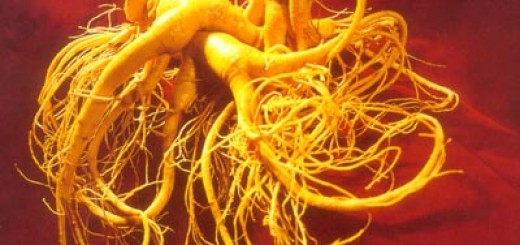| Share This Article
Research Frontiers of Medicinal Plants |
||
| DOWNLOAD |
|
Downloads Pharmacological Review of Ginsenoside Dammarane Saponin Rh2 Downloads Pharmacological Review of Ginsenoside Dammarane Saponin Rg1 Downloads Pharmacological Review of Ginsenoside Dammarane Saponin Rb1 Downloads Pharmacological Review of Aglycon Dammarane Sapogenin (AGS) – Protopanaxatriol (PPT) Downloads Pharmacological Review of Aglycon Dammarane Sapogenin (AGS) – Protopanaxadiol (PPD) |
Aglycone dammarane sapogenin protopanaxatriol induces apoptosis of leukemia cells and synergizes chemo drugs
Leukemia is a group of cancers that usually begins in the bone marrow and results in high numbers of abnormal white blood cells. These white blood cells are not fully developed and are called blasts or leukemia cells. Symptoms may include bleeding and bruising problems, feeling very tired, and an increased risk of infections. Most forms of leukemia are treated with pharmaceutical medication, typically combined into a multi-drug chemotherapy regimen. Some are also treated with radiation therapy. The toxicity of chemotherapy is a common cause of morbidity and mortality in leukemia patients, as well as a frequent source of sequelae at mid-long term. These adverse effects are often the consequence of direct toxicity in healthy tissue, as a result of the low specificity of these drugs. Therefore, alternative approaches with lower toxicity are highly desired. Ginsenosides and metabolites are the main ingredients responsible for the multiple pharmaceutical functions of ginseng, which is one of the most commonly consumed herbal medicines world widely. Recently, a major ginsenoside metabolite, compound K, inhibited the growth of the clinically relevant pediatric leukemic cell lines in a time- and dose-dependent manner (Cancer Cell International 2013, 13:24). Also, compound K arrested division of leukemic cells at G1 phase, and initiated apoptosis as well. These findings suggest that as a low toxic natural reagent, ginsenosides could be a potential drug for leukemia intervention and to improve the outcome the disease. Another study conducted by demonstrated that protopanaxatriol, one of the strongest ginsenosides in Asian ginseng, was found to be able to stop leukemic cell proliferation and induce their apoptosis at medium and high concentrations. More importantly, PPT incubation can sensitize leukemic cells to cytotoxic drugs such as homoharringtonin, cytarabine, adriamycin and etoposidi. The study results were published on Journal of Chinese Medicine Research (2004, 4[2]) Title: Effects of ginsenosides and panaxatriol extracted from ginseng on inhibition of proliferation,inducing apoptosis and cytotoxic drug sensitivity in leukemic cells Abstract: To investigate if growth suppression and apoptosis ofleukemic progenitor cells can be induced by ginsenosides(gs)or protopanaxatriol(PPT)for exploring the effective components on leukemia within gs. The components of PPT were purified from gs that were extracted from ginseng herb. both primary leukemia progenitor cells from patients with acute myeloid leukemia and cell lines of k562/vcr,k562/adr(resisted to cytotoxic drugs),hl-60,meg-01,k562were incubated in semi-solid or liquid culture system. After being treated by gs or PPT with various concentrations,the leukemia cells were observed for their proliferation,apoptosis and sensitivity of chemotherapy drugs by usingmtt assay,flow cytometry,annexin v analysis,dna ladder and drug sensiˉtive test. Results:
Conclusion: Ginsenosides or protopanaxadiol (PPT) displayed both suppression and stimulation activities on leukemic cells depending on dosage applied. Both gs and PPT at low dose could drive non-cycling leukemic progenitors into cell cycle,thereby potentiate their susceptibility to cytotoxic drugs. meanwhile, gs could specifically induce apoptosis of leukemic cells at its medium concentrations. It suggested that PPT is an efficient component for anti-leukemia within ginsenosids. Our results might provide reliable evidence for clinicaltrial as PPT-assistant chemotherapy drugs. |








